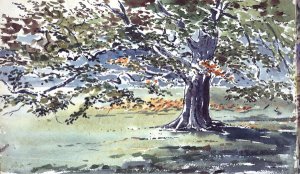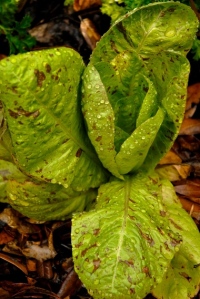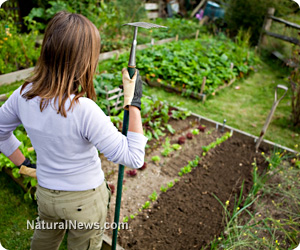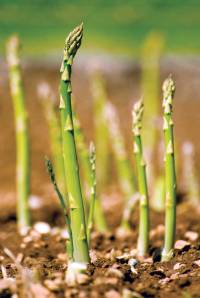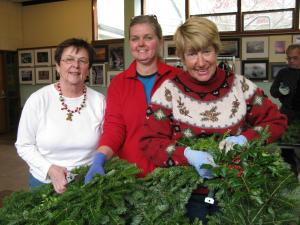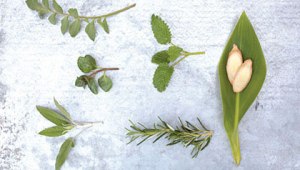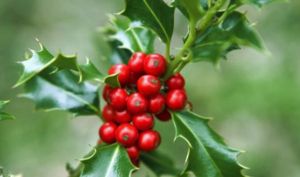Plan for Good Garden Production
Whether you draw your garden plans with pencil and paper or use a software tool such as the MOTHER EARTH NEWS Vegetable Garden Planner, you’ll need to think ahead to incorporate the following yield-maximizing strategies.
1. Grow High-Value Crops. “Value” is subjective, though growing things that would be costly to buy makes good sense, provided the crops are well-suited to your climate. But value can also be about flavor, which may mean earmarking space for your favorite tomato varieties and fresh herbs first, and then considering how much money you could save by growing other crops at home.
2. Start Early, End Late. Use cloches, cold frames, tunnels and other season-stretching devices to move your spring salad season up by a month or more. In fall, use row covers to protect fall crops from frost and deer while extending the harvest season for a wide assortment of cold-tolerant greens and root crops.
3. Grow the “Shoulder Season” Fruits. You can usually pick and stash June-bearing strawberries and early raspberries in the freezer before your garden’s vegetables take over your kitchen. Raspberries that bear in the fall and late-ripening apples are also less likely to compete with summer-ripening vegetables for your food preservation time.
4. Emphasize What Grows Well for You. Crops that are easy to grow in one climate or soil type may be huge challenges in others, so aim to repeat your successes. For example, my carrots are seldom spectacular but my beets are robust, so I keep carrot plantings small and grow as many beets as my family can eat. When you find vegetables that excel in your garden, growing as much of them as your family can eat will take you a huge step closer to food self-sufficiency. And don’t overlook the wisdom of your gardening neighbors.
5. Grow Good Things to Drink. In addition to growing what you eat, try growing tasty beverages. I allow rampant apple mint to cover a hillside because it’s such a great tea plant, and rhubarb stalk tea makes a tart substitute for lemonade. Freeze or can the juices of berries and tree fruits, or make them into soda, hard cider or wine. These days, well-made apple, blueberry or strawberry wines start at $12 a bottle, so learning how to make your own can yield huge dividends.
6. Plant Perennials. Edible plants that come back year after year save planting time, and maintenance is usually limited to annual weeding, fertilizing and mulching. Asparagus and rhubarb thrive where winters are cold, sorrel is a terrific perennial salad green, Jerusalem artichokes and horseradish grow almost anywhere, and gardeners in climates with mild winters can grow bunching onions or even bamboo shoots as perennial garden crops.
7. Choose High-Yielding Crops and Varieties. Few things are more disappointing than nurturing a tomato plant for three months only to harvest three fruits from it. Don’t let this happen to you! Network with local gardeners to find varieties known to grow well in your area, or see our list of the best regional varieties, and give them a try. Keep your mind open to classic, traditionally bred hybrids as well as superior open-pollinated varieties. With sweet peppers, for example, many gardeners need the disease resistance and fast maturation of hybrid varieties to make a good crop. The opposite is true with beans, lettuce, peas, winter squash and many other vegetables that don’t require hybridization to make them more productive.
8. Include Essential Kitchen Herbs. When we conducted our online mega-survey of the best garden crops, many gardeners told us about the rewards of growing culinary herbs such as basil, dill, mint and parsley, which are easy to grow yet pricey to buy.
9. Don’t Grow Too Much of One Thing. Last year, some friends who hadn’t gardened in a while proudly told me they had spent the weekend planting 50 tomato and pepper plants. Wow! At my house, 14 tomato plants and 10 peppers give the two of us a year’s supply of canned, dried and frozen goodies — plus extra to give away. Growing more would be a waste of time, space and precious soil resources. Unless you sell at a farmers market stand, aim to grow only as much as you can use.
10. Try Something New Every Year. Part of the fun of gardening is discovering new things, and few of us have ever grown many edible crops worth trialing in our gardens. Keep in mind that you’ll need to try cool-season crops in both spring and fall before deciding whether they are garden-worthy. Some crops (or even varieties) that are duds if grown in spring may amaze you with their exuberance if grown in fall.
Use Space Efficiently
It’s a rare gardener who has as much fertile growing space as he or she would like, and most of us work limited-space gardens as intensively as we can. (Keep reading for tips on how to “Make the Most of Small or Shady Gardens.”) In gardens of any size, try the following tips to make prime use of every bed and row.
11. Plant in Blocks. According to Colorado State University Extension research, you can quadruple per-square-foot production of small kitchen vegetables such as lettuce, carrots and beets by planting them in blocks within wide beds rather than in rows. Block planting makes efficient use of space by keeping the spacing between plants tight and eliminating unnecessary pathways.
12. Try Vertical Gardening. When he moved from suburban Baltimore to a ground-floor condo in Albuquerque, N.M., lifelong organic gardener Ary Bruno went vertical to make the most of his limited space. By adding 3 to 4 inches of compost to his compact beds each spring, Bruno can grow trellised tomatoes, pole beans and cucumbers in his patio garden in summer, followed by greens in fall. Vertical growing can greatly increase your garden returns.
13. Interplant Compatible Crops. “When growing a summer crop such as tomatoes, I plant lettuce and spinach to grow in the shade of the taller plants,” says Bonnie White of Albany, Ore. “I also like growing a crop that takes a while, such as carrots, alongside a faster-growing crop such as radishes, which will be ready in only 30 days.” Find many more ideas for complementary crops in Companion Planting With Vegetables and Flowers.
14. Succession Sow for Steady Harvests. With lettuce, snap peas, sweet corn and other vegetables that mature like clockwork, make two sowings three weeks apart to lengthen your harvest season. Or, plant two varieties with different maturation times on the same day.
15. Use Seedlings to Run Tight Successions. Let’s say it’s June, and you want to replace bolting lettuce with summer squash. If you had thought ahead and started squash seeds in containers, you could pull out the lettuce, add some compost and plug in the squash, all in the same afternoon. Using seedlings tightens up the timing of succession planting (sometimes called “relay planting”), whether you’re replacing spring spinach with fall broccoli or following cucumbers with fall snow peas sprouted indoors.
16. Plant One New Edible Every Week. Eating squash every day can get old, but you won’t have that problem if your garden offers up small bites of unusual veggies, such as bok choy, bulb fennel, celeriac, escaroles, radicchio and white beets. I like to devote one wide row to “this-and-that” crops that I sow in small pinches. Organizing the garden this way keeps these crops from getting lost and gives me a place to try unfamiliar veggies.
Smarter Garden Harvesting
Growing a great crop is only half of the story. As each crop comes in, you’ll still need to pick, cook or store your fresh veggies with a constant eye toward preserving flavor, nutrition and other good eating qualities.
17. Pick Things at Their Peak. Aim to harvest in the morning, which is when plants are plumped up with nutrients and moisture. Preserve the flavor and nutrition of leafy greens, root crops and many other vegetables by refrigerating them, but don’t chill storage onions, sweet potatoes, shallots or tomatoes.
18. Replant Roots and Root Cuttings. “A friend told me how her mother-in-law used to plant the rooted bottoms of plants,” says Germaine Jenkins of North Charleston, S.C. “This works great with green onions and leeks, giving you brand new veggies in three weeks or less.” In climates with long, warm summers, many gardeners root cuttings taken from tomatoes in early summer and grow them as an early fall crop.
19. Grow Cut-and-Come-Again Crops. Chard is the best example of a vegetable that bounces back each time you harvest a handful of stalks and leaves, and many other vegetables will make a second or third comeback if given a chance. If cut high, broccoli, cabbage and even bulb fennel will grow small secondary heads, and bush beans that you keep picked (harvesting gently, using two hands) will often produce three flushes of blossoms and pods. Look for cut-and-come-again lettuce varieties, too.
20. Pick Early and Often. Many garden vegetables get harvested when they are technically quite immature — budding heads of broccoli flowers, barely plump snap peas or tender, little summer squash. Harvesting early and often helps keep vegetable plants in reproduction mode longer, which in turn increases yields. In a study from the University of Idaho Extension comparing summer squash harvested daily as baby squash with the same varieties picked every two to three days, researchers gathered more than twice as many baby squash from the more intensively harvested plants.
About the Author: Nick Wells has over 10 years of horticulture experience and has written over 30 gardening posts. Professionally he is a Network Engineer at https://www.fieldengineer.com/ but in his spare time he does gardening and loves to write about gardening and horticulture.

